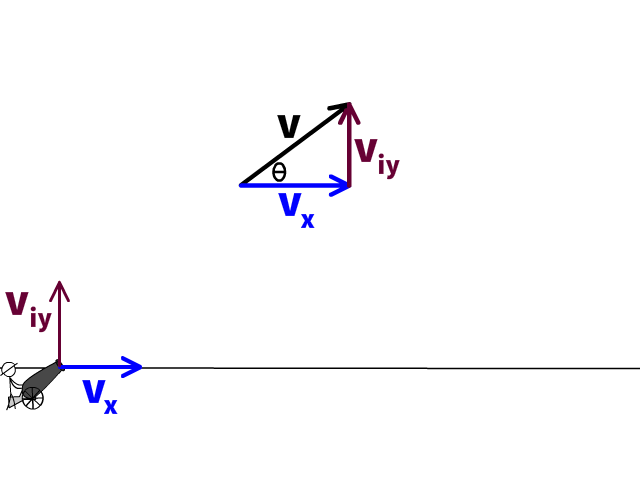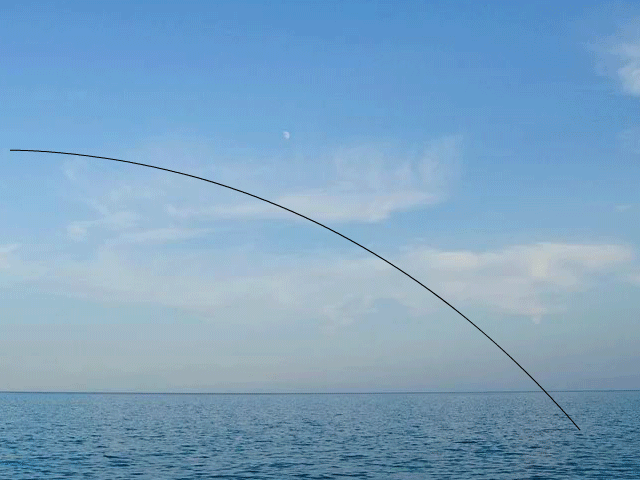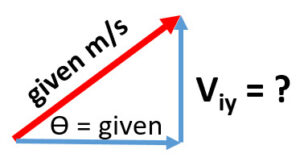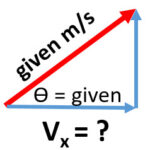Projectile Motion Learning Check
Try the following projectile motion learning check before moving on to angular projectile motion mathematical problems. This includes basic principles to be successful at angular problems. See the problems and check your answers below. Watch the video to see how to do the problems.

- A stone is kicked 10.0 m/s horizontally from a cliff 52 m high. How long does it take the rock to hit the ground?
- Jake Fromm threw a football 5.0 m/s horizontally from the edge of a cliff at a height of 57 m. How far from the base of the cliff does the football land?
- How high is a Tufted Puffin flying 20 m/s horizontally when it dropped a jellyfish that landed 45.0 m horizontally away?

- Where is a Tuffed Puffin flying horizontally located when a fish dropped hits the ground?
A) behind where the squid hits the water
B) directly above it
C) past where the squid hits the water
- A Tufted Puffin flying 21 m/s horizontally when it dropped a jellyfish that landed 56.0 m horizontally away. What is the vertical velocity of the jellyfish when it hits the water?
- How tall is the castle wall if an arrow lands 60.0 m away from the base when shot 15 m/s horizontally from the top?
- Which is true about X and Y velocity in projectile motion?
A) Neither X-Axis nor Y-Axis velocity is accelerated by gravity
B Both X-Axis and Y-Axis velocity is accelerated by gravity
C) X-Axis velocity is accelerated by gravity and Y-Axis is not
D) Y-Axis velocity is accelerated by gravity and X-Axis is not
- What is the initial vertical component of velocity when a ball is thrown 14.0 m/s at an angle of 38.0°?
- What is the horizontal component of velocity when a ball is thrown 27.0 m/s at an angle of 31.0°?
- Younghoe Koo kicks a football with a +27 m/s vertical component of velocity and a 25 m/s horizontal component of velocity. What is the vertical component of velocity when the football lands at the same height?
- Younghoe Koo kicks a football with a +26 m/s vertical component of velocity and a 21 m/s horizontal component of velocity. What is the magnitude of vertical acceleration when the football is at the top of its flight?
- Younghoe Koo kicks a football with a +26 m/s vertical component of velocity and a 23 m/s horizontal component of velocity. What is the magnitude of horizontal acceleration when the football is at the top of its flight?
- Younghoe Koo kicks a football with a +29 m/s vertical component of velocity and a 24 m/s horizontal component of velocity. What is the horizontal component of velocity when the football lands at the same height?
- Younghoe Koo kicks a football with a +27 m/s vertical component of velocity and a 22 m/s horizontal component of velocity. What is the minimum velocity the football will have during its flight?
- Where is a ball thrown up at an angle traveling with minimal velocity
A) top of flight path
B) bottom of flight path
- Where is a ball thrown up at an angle traveling with maximum velocity
A) top of flight path
B) bottom of flight path
- A Puffed Tuffin flying horizontally drops a fish. How does the fish appear to fall from the perspective of an observer on the ground?
A) it falls backwards
B) it stays suspended in the air
C) it falls in a curved parabolic path
D) it falls straight down
- A Tuffed Puffin flying horizontally drops a fish. How does the fish appear to fall from the perspective of the Tuffed Puffin?
A) it stays suspended in the air
B) it falls straight down
C) it falls backwards
D) it falls in a curved parabolic path
Links
- On to Angular Launch Projectile Motion Problems
- Back to the Main 2D Motion Page
- Back to the Stickman Physics Home Page
- Equation Sheet


